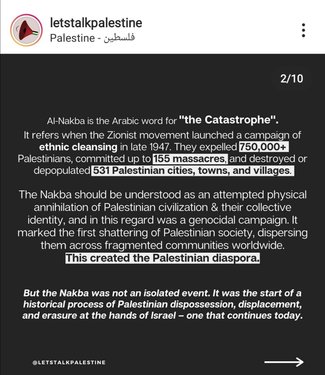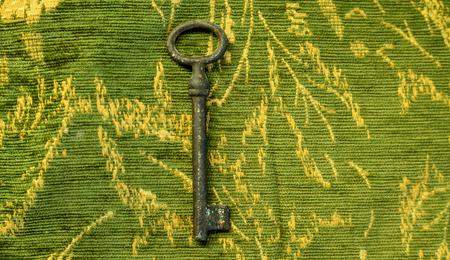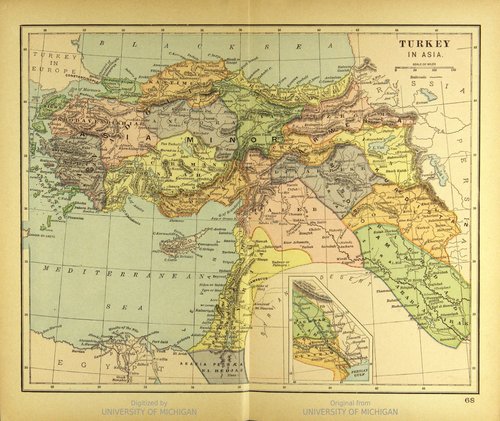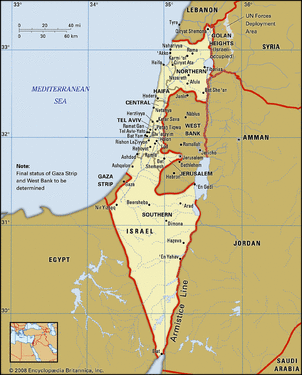-
Posts
8,434 -
Joined
-
Days Won
771
Content Type
Profiles
Forums
Events
Everything posted by ummtaalib
-
Obituary – Moulana Taha Karaan (Rahimahullah) The Ummah mourns the loss of yet another great scholar of Islam, Moulana Muhammad Taha Karaan (Rahimahullah), a renowned Shafi’i scholar from Cape Town, South Africa. His father, Moulana Yusuf Karaan (Rahimahullah), was one of the oldest and most distinguished Islamic scholars in the Cape as well. Moulana Taha completed his Qur’anic memorization in one year at the Waterfall Islamic Institute (Mia’s Farm), the oldest Islamic seminary in South Africa. During his stay, he assisted in the editing of the Qur’anic prints that the Institute has become famous for the world over. After finishing four years of the Aalim course in two years, he journeyed to the Indian sub-continent and attended Darul Uloom Deoband, graduating from there in 1991 with the highest of distinctions – as did his father – in a class of over 700 students. He then travelled to the Middle East and completed a two-year graduate diploma at the Higher Institute for Islamic Studies in Cairo, Egypt. He was a scholar renowned for his encyclopaedic knowledge, amazing memory, and research on various contemporary issues. Together with serving in the Fatwa Department of the MJC he was also the principal of Darul Uloom Al-‘Arabiyyah Al-Islamiyyah in Strand, Cape Town. Worthy of note were his tireless effort in educating the ummah with regards to the threat of Shi'ism and defending the honour of the Ahlul Bayt and Sahabah Radiyallahu anhum. He founded the Mahajjah Institute (mahajjah.com) with a special focus on academically responding to the false allegations of the Shia and protecting the Imaan of the masses. His students describe him as divinely-gifted with encyclopaedic knowledge; possessed of a near-photographic memory; an insatiable bibliophile within the Islamic sciences and beyond; a teacher that never ceased to inspire; endowed with an elegant calligraphic hand and a penchant for poetry; thoroughly unassuming, pleasant, brilliant and tender-hearted. May Allah Ta’ala bless his family with sabr e jameel and ajar e azeem for this great loss, Ameen. May Allah Ta'ala accept all of Moulana's efforts and grant him the highest stages in Jannatul Firdous with his Mashaaikh, Asatizah and those whom Allah Ta'ala has favoured among the Ambiyaa (عليهم السلام), the Siddeeqeen, the Shuhadaa and the Saaliheen, Aameen. Jamiatul Ulama (KZN) Council of Muslim Theologians
-
Further Reading Articles: The Nakba - What really happened? - American Muslims for Palestine History of Palestine - American Muslims for Palestine The Nakba explained - Middle East Monitor The Nakba did not start or end in 1948 - AlJazeera The Nakba - IMEU Reports: Amnesty International - Israel & occupied territories 2020 Amensty International - Palestine (state of) 2020 Amnesty International - Israel must not be allowed its rampage against Palestinians Amnesty International - Israel: denying Covid-19 vaccine to Palestinians is 'institutionalised discrimination' Amnesty International - May 2021 Violence condemned Highly recommended Book: Palestine Beginners Guide - from ancient civilisation to modern day Palestine To Non-Muslims: What Palestine means to me as a Muslim
- 14 replies
-
- gaza
- palestinians
-
(and 4 more)
Tagged with:
-
The Nakba Ongoing.... Save Silwan Save Sheikh Jarrah Stories from Gaza Arresting & Detaining Palestinians called "Operation law and order" Storming Al-Aqsa Israeli forces stormed the Al-Aqsa Mosque compound on Monday and fired rubber-coated rounds, tear gas, and sound bombs at Palestinian worshippers The Village of Lifta Lifta was a Palestinian Arab village on the outskirts of Jerusalem. The village was depopulated during the early part of the 1947–48 Civil War in Mandatory Palestine. In July 2017 Israel declared Lifta (called Mei Neftoach) as a national nature reserve. Now to house new Israeli neighborhood
- 14 replies
-
- gaza
- palestinians
-
(and 4 more)
Tagged with:
-
Life in occupied Palestine Confisicating Palestinian land to build Jewish Settlements Gilo, a Jewish settlement in the West Bank, separated by a wall from the Palestinian city of Bethlehem. © Ryan Rodrick Beiler/Shutterstock.com Checkpoints There are hundreds of checkpoints, roadblocks and flying checkpoints in the West Bank, and between Israel and the West Bank where Palestinians must show proof of identification and be searched [Reuters] The Wall In 2002, Israel started constructing the wall, slicing through Palestinian communities, agricultural fields, and farmland. The people of Palestine cannot move freely from one city to another due to the barrier The wall has been described by Israeli officials as a necessary security precaution against “terrorism.” Palestinians, however, have decried it as an Israeli mechanism to annex Palestinian territory as it is built deep within the West Bank and not along the 1967 Green Line, the generally recognised boundary between Israel and the West Bank.
- 14 replies
-
- gaza
- palestinians
-
(and 4 more)
Tagged with:
-
Is the Nakba over?
- 14 replies
-
- gaza
- palestinians
-
(and 4 more)
Tagged with:
-
- 14 replies
-
- gaza
- palestinians
-
(and 4 more)
Tagged with:
-
Horrors of the Nakba In less than six months, from December 1947 to mid-May 1948, Zionist armed groups expelled about 440,000 Palestinians from 220 villages. Before May 15, some of the most infamous massacres had already been committed; the Baldat al-Sheikh massacre on December 31, 1947, killing up to 70 Palestinians; the Sa’sa’ massacre on February 14, 1948, when 16 houses were blown up and 60 people lost their lives; and the Deir Yassin massacre on April 9, 1948, when about 110 Palestinian men, women and children were slaughtered. By the first half of 1949, at least 750,000 Palestinians in total were forcibly expelled or fled outside of their homeland. Zionist forces had committed about 223 atrocities by 1949, including massacres, attacks such as bombings of homes, looting, the destruction of property and entire villages. Some 150,000 Palestinians remained in the areas of Palestine that became part of the Israeli state. Of the 150,000, some 30,000 to 40,000 were internally displaced. Like the 750,000 who were displaced beyond the borders of the new state, Israel prohibited internally displaced Palestinians from returning to their homes. In the years that followed the establishment of Israel, the state extended its systematic ethnic cleansing. Though armistice agreements had been signed with Egypt, Jordan, Syria and Lebanon in 1949, the newly founded Israeli army committed a number of additional massacres and campaigns of forced displacement. For example, in 1950, the remaining 2,500 Palestinian residents of the city of Majdal were forced into the Gaza Strip, about 2,000 inhabitants of Beer el-Sabe were expelled to the West Bank, and some 2,000 residents of two northern villages were driven into Syria. By the mid-1950s, the Palestinian population inside Israel had become about 195,000. Between 1948 and the mid-1950s, some 30,000, or 15 percent of the population, were expelled outside the borders of the new state, according to the BADIL refugee rights group. AlJazeera The Nakba Deir Yassin Naser Al-Din Lest we forget My Beit Daras, my Nakba: Two Palestinian intellectuals reminiscing about their destroyed village
- 14 replies
-
- gaza
- palestinians
-
(and 4 more)
Tagged with:
-
Why do Palestinians commemorate the Nakba on May 15? The British occupation authorities had announced that they would be ending their mandate in Palestine on the eve of May 15, 1948. Eight hours earlier, David Ben-Gurion, who became Israel’s first prime minister, announced what the Zionist leaders called a declaration of independence in Tel Aviv. The British Mandate ended at midnight, and on May 15, the Israeli state came into being. While Israel celebrates May 15 as its day of independence, the Palestinian people commemorate the Nakba on that day.
- 14 replies
-
- gaza
- palestinians
-
(and 4 more)
Tagged with:
-
British Involvment After the dissolution of the Ottoman Empire (1517-1914), the British occupied Palestine as part of the secret Sykes-Picot treaty of 1916 between Britain and France to divvy up the Middle East for imperial interests. In 1917, before the start of the British Mandate (1920-1947), the British issued the Balfour Declaration, promising to help the “establishment in Palestine of a national home for the Jewish people”, essentially vowing to give away a country that was not theirs to give. Read more: AlJazeera
- 14 replies
-
- gaza
- palestinians
-
(and 4 more)
Tagged with:
-
Zionism The Nakba happened in 1945 however it stemed from the emergence of the Zionist movement founded by Theodore Herlz (1860-1904) in 1896. Zionism can be defined as a political movement. The first Zionist congress convened in Basel in 1897 with 200 delegates from all over Europe. They called for the estbalishment of an exclusive homeland for the Jewish people. This, according to Herlz, would consitute a "solution for the Jewish question" and emancipate the Jewsih people from presecution. Zionism therefore, was not born out of Judaism but out of the European nationalism of the late 19th century. Though some of the movement’s pioneers initially supported a Jewish state in places such as Uganda and Argentina, they eventually called for for building a state in Palestine based on the biblical concept that the Holy Land was promised to the Jews by God. The issue however was that Palestine was already inhabited and the question of what to do about the native Palestinian Arabs took up much of the early discussions of the Zionist movement. The consensus was that the Palestinian natives needed to be removed either by agreement or by force. From 1882 onwards, thousands of Eastern European and Russian Jews began settling in Palestine; pushed by the anti-Semitic persecution and pogroms they were facing in the Russian Empire, and the appeal of Zionism. In the 1880s, the community of Palestinian Jews, known as the Yishuv, amounted to three percent of the total population. In contrast to the Zionist Jews who would arrive in Palestine later, the original Yishuv did not aspire to build a modern Jewish state in Palestine.
- 14 replies
-
- gaza
- palestinians
-
(and 4 more)
Tagged with:
-
What is An-Nakba? 15 May 1948 marks the "Nakba" for the Palestinian people. Nakba means "Catastrophe" in Arabic and refers to the destruction of Palestinian society in 1948 when 78% of historic Palestinian land was seized by Zionists for the establishment of the state of Israel. During the fighting, approximately 750,000 Palestinians were expelled from their homes or fled to escape the violence. Most were left destitute and ended up in refugee camps while some rebuilt their lives and prosperity elsewhere. Symbol of the Key Photo Credit: © Amnesty International/Tanya Habjouqa/NOOR The Key is a widely used symbol of the Nakba, as many Palestinians kept the keys to their homes when they were forced into exile in 1948. It did not end there. Israel has been confiscating Palestinian land and bulldozing Palestinian homes with complete impunity. These lands are being used to build illegal settlements to house Israeli citizens, while Palestinians become homeless. 71 YEARS OF SUFFOCATION: STORIES OF PALESTINIAN REFUGEES
- 14 replies
-
- gaza
- palestinians
-
(and 4 more)
Tagged with:
-
Palestine Historically Despite popular belief that the Palestine-Israel conflict is thousands of years old, it only really goes back to about the early 1900s. In the late 1800s, Palestine was under Ottoman rule. At the time, the Jewish people accounted for around 3% of the population, Muslims to 87% and Christians 10%. People from all three Abrahamic faiths lived together in relative peace. Palestine on the old map Click on image to enlarge Palestine replaced with "Israel"
- 14 replies
-
- gaza
- palestinians
-
(and 4 more)
Tagged with:
-
We will try to present an overview of the story of the people of Palestine, a people displaced from their homes and society, suffering untold persecution and misery which began with the emergence of political Zionism in the 19th century and continues to this day. INDEX 1. Palestine Historically 2. What is An-Nakba? 3. Origin of Zionism 4. British Involvement 5. Why do Palestinians commemorate the Nakba on May 15? 6. Horrors of the Nakba 7. Is the Nakba over? 8. Life in occupied Palestine 9. The Nakba ongoing... 10. Further Reading 11. Mapping Israeli Occupation 12. The Massacre of the village of al-Dawayima
- 14 replies
-
- gaza
- palestinians
-
(and 4 more)
Tagged with:
-
A Bargain for Barakah There was once a man who had four sons. When he fell ill (and was nearing his end), one of his sons (was so eager to serve him and enjoy the exclusive privilege of caring for him, that he) told the other three sons, “Either you nurse him in his sickness and forfeit your shares of his estate; or I will nurse him and forfeit my share of the estate.” His brothers were pleased with his proposition and left him to nurse their father on his own. When the father eventually passed away, then as agreed, the son who nursed him did not take any share from the estate. Thereafter, he saw a dream one night in which a person told him that one hundred dinaars (gold coins) were kept at a certain place, and he should take these coins. He asked the person whether the money contained barakah (blessings), to which the person replied in the negative. The following morning, when he related the dream to his wife, she insisted that he should take the money saying, “Having some food to eat and clothing to wear is (sufficient) barakah.” However, he, did not agree. The following night, he again saw a dream in which a person told him of a certain place where ten dinaars were kept. Once again, when he asked if the money contained barakah, the reply was in the negative. He related the dream to his wife the next morning, and she insisted that he should go and take the money, but again, he refused to do so (not wishing to acquire wealth which was devoid of barakah). On the third night, he again saw a dream in which a person told him of a certain place where he could find a single dinaar. This time, when he enquired as to whether it contained barakah, the answer was in the affirmative. He thus went to the described location and took possession of the dinaar. As they required food, he then used the dinaar to purchase two fish which he brought home. Thereafter, when he cut the fish open, he discovered an invaluable pearl in the stomach of each fish! At that time, it so happened that the king was searching for a magnificent pearl to purchase. When he was informed that this man had a unique, magnificent pearl, he bought it from him for thirty mule loads of gold! However, when the king saw the pearl, he declared that the pearl would look best if it was paired with another pearl to match it. The king’s men thus returned to the man and asked him whether he possessed a second pearl which matched the first. When he responded that he did indeed have one, they offered to pay him double the price of the first pearl! The man sold the second pearl to the king, thus acquiring a total of ninety mule-loads of gold. (Musannaf ‘Abdur Razzaaq #21027) Lessons: 1. Serving our parents and caring for them is not a burden – it is a privilege. It is a means of acquiring their sincere du‘aas and securing abundant blessings which will benefit us in this world and the next. If we truly understood the great rewards that lie in store for those who serve their parents with devotion, we would certainly compete with one another for the privilege of serving them. 2. Wealth is earned by many people – but not every person enjoys barakah. Wealth without barakah will not bring any happiness, peace or contentment. In fact, when we lose barakah, due to impermissible business dealings, dishonesty, etc. then the wealth that we earn, will only cause unhappiness, uneasiness and misery. Thus, the caring son in the incident above, gave preference to one dinaar with barakah over one hundred dinaars without barakah. 3. Barakah is such that a person may not see its effect immediately. At times, a person reaps the fruit of the barakah later on, while at other times the barakah one acquires is enjoyed by one’s progeny long after his demise. Al-Haadi
-
-
Is it permissible for the divorced parties to demand any gifts given? Q. In many families, when a divorce takes place, especially, a divorce of a newly wedded couple, the parties demand the return of the gifts given after the Nikah. Is this acceptable? (Question published as received) A) Any gift/s exchanged between the husband and wife or between the husband or wife’s family before or after the Nikah, belongs to the parties who have taken ownership of the gift/s. It is impermissible for any of the parties to demand the return of the gifted item/s, whether after the Nikah or after a Divorce takes place. (Badaai’ 6/128) Rasoolullah Sallallahu Alayhi Wasallam said: “One who takes back his gift (which he has already given) is like a dog that swallows its vomit.” (Sahih Muslim) And Allah Ta’ala Knows Best Mufti Ismaeel Bassa Confirmation: Mufti Ebrahim Desai (The answer hereby given is specifically based on the question asked and should be read together with the question asked. Islamic rulings on this Q&A newsletter are answered in accordance to the Hanafi Fiqh unless otherwise stated.) Fatwa Department Jamiatul Ulama (KZN) Council of Muslim Theologians
-
Misconceptions In today’s technologically advanced world, we see non-authoritative sources spreading Islamic legal verdicts (fatwas) for the general public who are none the wiser. With one ‘ping,’ misinformation can spread like wildfire and potentially mislead thousands of people. Listed below are common misconceptions regarding menstruation, followed by what Islam actually says about the matter. Misconception 1: It is not permissible to trim/cut hair or nails while menstruating. Busted: Whilst it is somewhat disliked (makruh tanzihi) to cut hair or nails in a state of major ritual impurity due to wet dreams, intercourse, etc. (janabah), there is no dislike in doing so during menstruation (hayd) or post-natal bleeding (nifas). Misconception 2: It is not permissible to use a comb used by a menstruating woman. Busted: This claim has absolutely no basis in the Islamic law (Shari’ah) and is in fact contrary to a narration mentioned in Sahih al-Bukhari. It is narrated on the authority of Aisha (may Allah be pleased with her): “While in menses, I used to comb the hair of Allah’s Messenger (Allah bless him and give him peace)” (Sahih Muslim 244/1) Misconception 3: It is not permissible to sit on a prayer mat while menstruating. Busted: It is actually recommended (mustahabb) for a woman to perform ablution (wudu) and sit on her prayer mat while menstruating. She should recite other forms of supplications (adhkar e.g. praises and glorifications) for the duration it usually takes her to offer ritual prayer (salat). This will ensure she remains in the habit of worship, even during the days salat is not due on her. (Manhal al-Waridin p.267) Misconception 4: You cannot wear the same clothes worn in menstruation after attaining purity. Busted: They can be worn as long as the clothes have not been soiled by physical impurity. *See ‘Removing Impurity‘ for further detail. Misconception 5: Clothes worn in hayd must be washed separately. Busted: If clothes have been soiled by impurity while menstruating, they are the same as clothes soiled by any other impurity. They do not need to be washed separately. However, it may be advisable to wash any light-coloured garments as soon as possible so the stain does not set in. *See ‘Removing Impurity‘ for further detail. Misconception 6: It is not permissible to apply henna in menstruation. Busted: It is permitted to apply henna, whether on the hands, feet, or hair at any time. Misconception 7: It is not permissible to take a bath while menstruating. Busted: Islam advises us to stay clean at all times, and during hayd and nifas, one should make an extra effort to remain clean due to the bleeding that occurs. The Quran mentions, “Allah loves those who keep themselves pure” (Surat al-Tawbah 9:108). Misconception 8: You cannot use water to clean the private parts when menstruating; it will affect your fertility. Busted: This claim is completely baseless within the Shari’ah. Menstruating women should take extra care of their cleanliness to prevent the buildup of bacteria, odour, or physical impurity. Allah’s Messenger (Allah bless him and give him peace) said, “Cleanliness is half of faith” (Sahih Muslim 203/1). Misconception 9: It is not permissible to take a bath after menstruation until pubic hair is removed. Busted: It is compulsory to remove pubic hair on a weekly basis. Removing it is not a prerequisite to performing ritual bath (ghusl). *See ‘Basic Hygiene Etiquette‘ for further detail. Misconception 10: You must offer the prostration of recital (sajda tilawah) for a verse of prostration (sajda) heard during menstruation. Busted: If a menstruating woman hears a verse of sajda from someone else, it is not necessary for her to offer sajda tilawat, even after she attains purity. Misconception 11: You cannot leave your newborn during nifas. Busted: There is nothing mentioned in Shari’ah to prohibit a woman from leaving her newborn during nifas. Misconception 12: You cannot leave your house during nifas. Busted: There is no specific ruling mentioned in Shari’ah that prohibits a woman from leaving her house during nifas. Misconception 13: You cannot tell your father you are menstruating. Busted: In many cultures, it is considered inappropriate or immodest for a girl to tell her father she is menstruating. From a young age, girls are discouraged from discussing emotional and physical changes they may be going through. If a young girl needs help from her father to purchase sanitary pads, she should feel comfortable asking him. Fathers are there to care for their families; it’s their job. Menstruation is a completely normal part of everyday life. A father will understand that, and would never want his daughter to feel too embarrassed by something so natural as menstruation that it prevents her from asking him for help. There is no problem if there is shyness from either or both parties, but when she needs help, she should be able to ask. Misconception 14: You cannot write Qur’anic verses while menstruating. Busted: It is unlawful to write a Qur’anic verse while menstruating, unless the writer creates a barrier between her hand and the paper she is writing on. A menstruating woman should place a tissue or another piece of paper under her writing hand, so that her hand does not touch the paper on which the Qur’an is written. Misconception 15: Menstruating women must keep their distance from other members of their household. Busted: Islam is a religion of moderation and walking a balanced path; unlike many other faiths, it does not cast out menstruating women as unclean or unhygienic. Women are not expected to physically distance themselves from members of their household, including their spouse. There is no religious basis that prevents them from using the same utensils or sleeping in the same bed, although restrictions for intimacy remain. Menstrual Matters Whitethread
-
Attaining Ritual Purity A woman can experience fluctuations in her bleeding and purity. As long as the bleeding is between 3-10 days and follows a purity of at least 15 days, the bleeding will be menstruation (hayd). To attain purity after hayd, she will always be obligated to take a ritual bath (ghusl). In situations of irregular bleeding (istihada), such as bleeding less than 72 hours or exceeds 240 hours, she is only required to perform ablution (wudu) to attain ritual purity as this bleeding is not hayd (Manhal al-Waridin p.206). It’s important that she track each instance of bleeding and her respective purity days. This record will help her determine whether she needs to perform wudu or ghusl to exit from a state of impurity. To determine which of the scenarios applies to her, she looks at how many days she’s bled and her usual habit in hayd See here for an attachment Keep in mind that the flow of blood does need to be continuous in hayd. If the bleeding stops after 72 hours, a woman should perform ghusl and resume praying – she has no way of knowing if and when the bleeding will return. If the bleeding does not return, her hayd has ended. If the bleeding returns, she should stop praying and wait for it to end. It’s important for a woman to act on what she is seeing prayer time to prayer time and not based on what she anticipates will happen. If a woman bleeds fewer days than her previous hayd, she should repeat ghusl out of precaution when she reaches her habit mark (Manhal al-Waridin p.204). If she has to retrospectively revert to her previous habit, her prayers will remain valid.
- 11 replies
-
Menopause Menopause is a time of great change in a woman’s life. Unlike puberty, it isn’t openly discussed nor are women educated about what changes to expect. When it starts, anywhere from 45-55 years of age, and lasting between 5-7 years, women are often caught off guard. After going through menopause, many women feel relieved that they don’t have to worry about tracking their menstrual cycle or having a gap in their ritual worship. Biologically, menopause is when a woman’s menstrual cycle ends, and she can no longer conceive. The ovaries stop producing estrogen and progesterone and women experience a host of unpleasant symptoms, such as bone loss, hot flushes, insomnia, night sweats, vaginal dryness, and weight gain. Women also describe ups and downs in their emotional well-being, having to cope with anxiety, depression, an inability to concentrate, and a lack of motivation. While menopause can be a challenging time, these symptoms are temporary. A woman shouldn’t hesitate to reach out to her doctor with any concerns or questions she has. The Fiqh of It In Islamic law (Shari’ah) a woman is menopausal when she reaches 55 lunar years (53 solar years and 4 months). Prior to this age, any colour of blood that exits the body is considered menstruation (hayd) (Al-Muhit al-Burhani 212/1). Many women will notice a reduction in the number of days they bleed – as long as they have not reached the age of menopause and the bleeding lasts between 3-10 days, it will be hayd. Essentially, the rulings of hayd apply in their entirety until she reaches 55 lunar years. Once she reaches this age, vaginal blood will only be considered hayd if it is her regular menstrual colour, or if the blood is black or red and continues for a minimum of three days (Manhal al-Waridin p.166). Any other colour will be considered irregular bleeding (istihada), in which she continues her prayers and fasts, keeping in mind the rulings of istihada for purity before prayer.
- 11 replies
-
Miscarriage Even though miscarriages are a fairly common experience, it is completely natural to feel a sense of loss. Some miscarriages take place before a woman even knows she’s pregnant, while others take place in later trimesters. Some of the most common signs of a miscarriage are abdominal cramping, back pain, and vaginal bleeding. Women also notice a discernible decrease in pregnancy symptoms due to hormonal changes, such as breast tenderness, nausea, and sensitivity to smell. From a spiritual perspective, a miscarriage can feel like a devastating loss, but it is important to be content with Allah’s decree and to seek reward through patience and steadfastness. As believers, we understand that it is through adversity and trials that Allah draws us closer to Him and forgives us our shortcomings. At the same time, it’s important to reach out to a medical professional if the feelings are not something you can work through on your own. The Fiqh of It To understand and appropriately apply Islamic rulings related to a miscarriage, the first step is to determine the stage of fetal development. This, in turn, will determine whether the blood that exits from the vagina is classified as menstruation (hayd), irregular bleeding (istihada), or post-natal bleeding (nifas). If a woman miscarries within the first 12 weeks and the embryo does not have any discernible human features, the blood will be either hayd or istihada. If 15 days from the end of her last menstruation have passed and the bleeding continues for at least 72 hours, it is hayd. If it has been less than 15 days, the blood is considered istihada. In order to pray, she will make sure her body and clothes are free of physical impurity, change her liner or pad, and perform ablution (wudu). If the blood flow is continuous, she may fall under the category of an excused person. In this situation of early embryonic development, the miscarried embryo will be wrapped in a cloth, if applicable, and buried. However, it will not be given a ritual bath (ghusl) or prayed over. If the fetus has discernible human features, such as fingernails, hair, or limbs, the bleeding will be considered nifas. If the baby dies before or during labour, it will be named, given ghusl, wrapped in a clean cloth, and buried. However, there is no funeral prayer (janaza). If the baby is born and cries, even once, and then passes away, the janaza will be prayed in addition to the above-mentioned.
- 11 replies
-
Post-Natal Bleeding (Nifas) From the beginning of her pregnancy, a woman wonders what her labour and delivery will feel like. She learns the signs to active labour, such as the baby dropping, the dilation of the cervix and her water breaking. Contractions, which can feel like waves of intense pressure, will increase in frequency and intensity. As a woman goes through this experience, she also has to know what is expected of her in regards to her ritual prayer (salat). It is important to remember that whatever exits from the vagina during pregnancy is considered an impurity (najasah), including water breaking, losing the mucus plug, and seeing a watery red discharge (bloody show). These situations all invalidate ablution (wudu) and any impurity on the body/clothing must be removed prior to praying. However, they do not indicate the onset of nifas. Hence, a woman in labour is obligated to offer her prescribed (fard) prayers. If she cannot perform wudu (even with assistance), or there is no access to water, she will perform dry ablution (tayammum). If a woman is unable to stand or fears for the safety of the baby, she can perform salat sitting or even lying down. (Radd al-Muhtar 134-6/1, 233/1, 98/2) The Fiqh of It Technically, the start of nifas is when “most of the baby” has been delivered. If the baby is born head-first, “most” means after the chest comes out, and if the baby is breech, then after the navel comes out (Al-Bahr al-Ra’iq 129/1). With the onset of nifas, a woman cannot fast, pray salat, or have sexual intercourse until the bleeding ends, or up to 40 days, whichever comes first. If a woman does not have any post-natal blood, she is required to take a ritual bath (ghusl) and begin praying immediately. A cultural misunderstanding is that a post-natal mother will wait for the full 40 days to pray even if her bleeding ends earlier. This is incorrect, as 40 days is given as a maximum. Many women will stop much earlier. If this is the case, they should purify themselves with ghusl and begin praying. (Manhal al-Waridin pp.200-1) If the mother’s bleeding, coloured discharge, or spotting extends beyond 40 days, she will resort to her previous nifas habit, i.e. the number of days she bled after her last delivery. If it is her first pregnancy, she will count 40 days as her nifas, and any blood seen thereafter will be treated as istihada until her habit before the pregnancy is applied. (Manhal al-Waridin p.181) For example, if a woman had 30 days of bleeding after her first baby, and with her second delivery she bleeds beyond 40 days, her nifas will be 30 days. She will make up the prayers she missed from days 31-40, as these are istihada. If her bleeding ends before the 40-day maximum, she will have a new nifas habit. All the bleeding within the first 40 days after childbirth is considered part of nifas, even if the bleeding is intermittent or stops for some time (Al-Muhit al-Burhani 264/1). For example, a woman sees a spot of blood on the first day, then the bleeding stops. Thereafter, she sees blood again on day 39. She will consider herself to be bleeding for the entire duration, as it is within the 40-day time-frame. Multiple Births For multiple births, nifas will begin when more than half of the first baby exits the mother if vaginal, or from the birth of the first baby, if cesarean. This applies if the babies are born less than 6 months apart (Tabyin al-Haqa’iq 68/1). In our contemporary time, most multiple births are born within the same day, so nifas will begin after the first birth. Cesarean Birth If a baby is born from a cesarean section, only the blood that exits the vagina is considered nifas. If blood exits from her incision, and not from the vagina, she will perform ghusl and begin praying immediately. (Manhal al-Waridin p.160) Note: The Sacred Law rulings apply equally to menstruation (hayd) and nifas.
- 11 replies
-
Early Blood A woman’s menstrual cycle can vary in length each month – it’s important for a woman to know her days of bleeding (hayd) and purity (tuhr) in case she has irregular bleeding (istihada). She will then have to look at her record, in order to align her bleeding with her place of menstruation and the number of days she regularly bleeds. The Fiqh of It If a woman experiences bleeding earlier than her normal place of habit, she cannot assume that it is hayd. Her place of habit is when she is due to bleed in relation to her recent hayd and tuhr habits. For a detailed explanation of the place of habit, refer to ‘Number & Place’. There are three possible rulings that can apply to early blood:
- 11 replies
-
Number & Place When calculating habit in menstruation (hayd) and purity (tuhr), a woman looks at both the number of days (‘adad) as well as the place in the month (zaman) she bled. The Fiqh of It ‘Adad refers to the most recent number of days of valid blood (hayd) and valid purity (tuhr sahih)*. For example, Ayesha’s hayd was from September 1-5. Her following hayd was from October 1-5. Her ‘adad is 5 days for hayd and 25 days for tuhr. Zaman refers to the due date of a woman’s next menstrual cycle, based on her purity from the previous month. In this case it is 5 days of hayd, preceded by 25 days of tuhr. (Manhal al-Waridin pp.180-4) To really understand the interplay between ‘adad and zaman, let’s look at another example, Ayesha’s habit is 7 days for hayd preceded by 23 for tuhr. Accordingly, she was expecting her hayd to start on May 1, however it did not start until May 5. She then bled for 7 days. The ‘adad remains 7 days for hayd, but increases from 23 to 27 days for tuhr. This changes the zaman of hayd as the date she is expected to begin bleeding has shifted forward by 4 days. *A valid purity (tuhr sahih) is a purity that is 15 days or more, is not mixed with any bleeding in the beginning, middle or end and is preceded and followed by hayd. Determining Purity Habit
- 11 replies
-
Recording Cycles All women are obligated to keep a detailed record of bleeding and purity, referred to as a habit chart, including dates and times. In case of any irregularities, a written record allows her to accurately pinpoint which days are menstruation and purity. Without this, a woman will not know whether she is obligated to fast and pray. How to Record Your Cycle Technology has made it easy for a woman to keep track of her cycle. There are multiple apps available and there is always the traditional method of recording the information on a calendar or in a notebook. Regardless of the method, the following information should be included: Record all days in which there is blood or coloured discharge, whether it is continuous or intermittent. Record the start/end time of each instance of bleeding, using hours and minutes. Record the colour of the discharge, such as whether it is black, brown, red, yellow, etc. Example:
- 11 replies


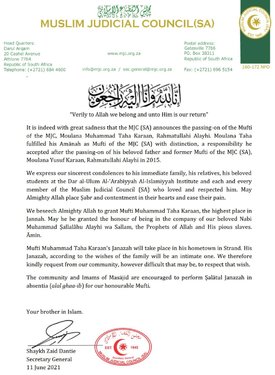
.thumb.jpg.bfad7d00aa4507e00e8e437f122d1268.jpg)




